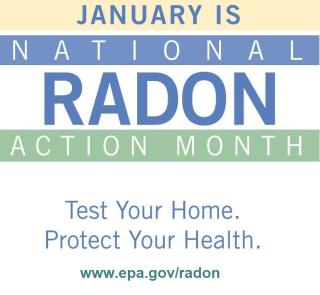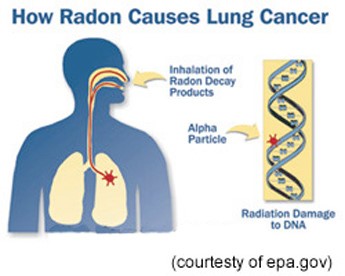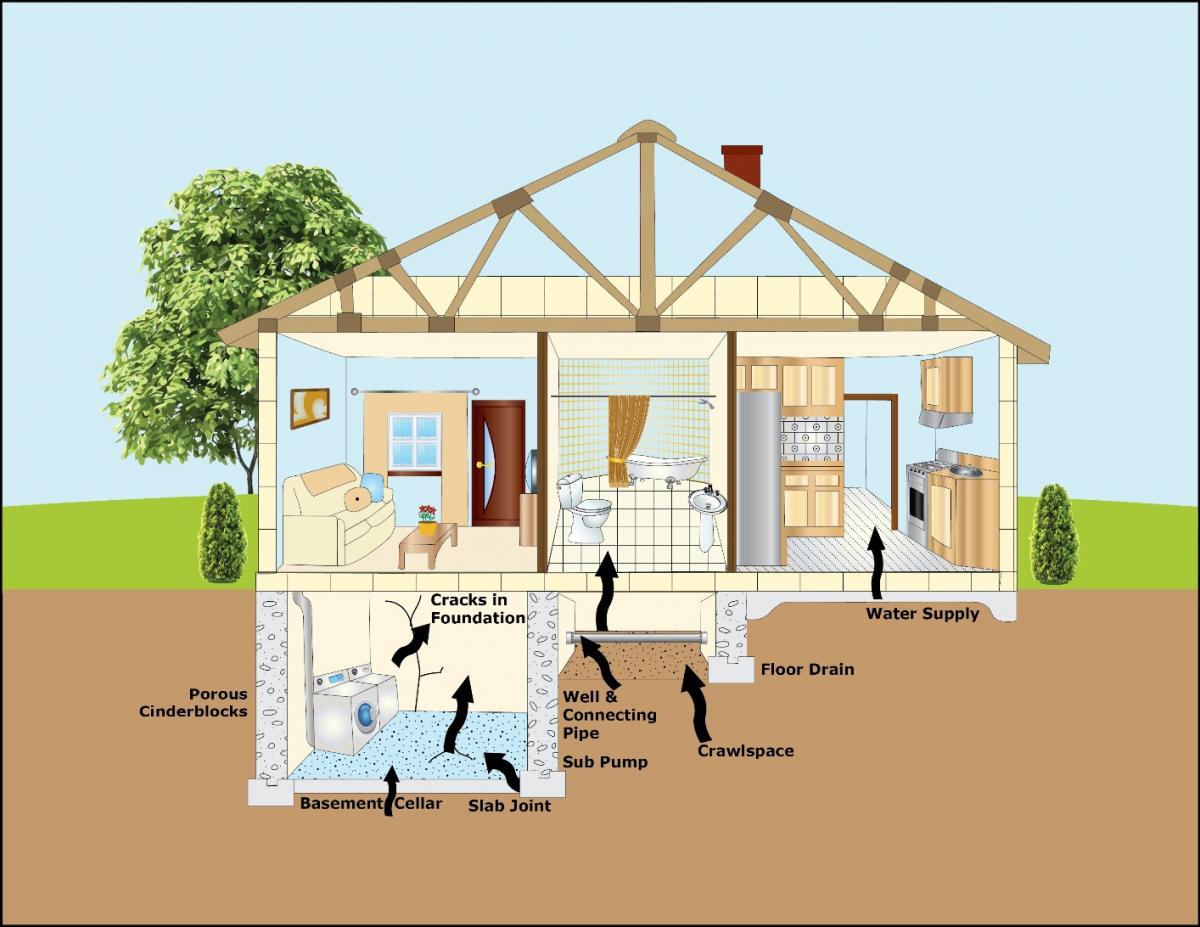** Radon Awareness Month

To view radon information and promotion of the Health District's distribution of free radon test kits (limited number and registration required), and a virtual Radon Information Session that was held on Thursday January 25th from 5:30 to 6:30 pm click HERE
- A naturally occurring radioactive gas in the environment.
- We can’t see, taste or smell it.
- Inhaled radon particles can overtime increase risk for lung cancer.
- You can test for radon in indoor air and drinking water.
- There are ways to reduce radon levels in the home!
For more information on radon check out the sites below: 
The State Department of Public Health Radon Program is also a great source of information for radon in homes, other buildings such as schools and finding a Radon Professional.
Winter months (December to March) are the preferred time of year to test for radon in the indoor air because homes are generally closed up due to the colder weather.To find a test kit, radon professional and review radon testing data see below:
American Lung Association: Do you Know your Radon Levels?

Radon may also be found in your drinking water, more often in water supplies from underground sources such as well water. Consuming water with radon does create a risk of developing certain organ cancers, but the risk is much smaller than inhaled radon. If high levels of radon are found in your drinking water, radon can be released into the air.You can test for radon in drinking water and there are water treatment options available.
Local water testing laboratories, such as York Analytical Laboratories in Newtown P:203-270-9973, can provide information on radon in drinking water, the water testing procedure and treatment.
To find other water testing laboratories visit the Yellow Pages or search on the internet.
For more information on radon in drinking water visit the CDC's website here.
Radon test kits for indoor air can be purchased at local home improvement stores. Please call ahead to check availability.
For any additional questions please contact Newtown Health District at 203-270-4291 or email: health.district@newtown-ct.gov
| Attachment | Size |
|---|---|
| 451.3 KB |



